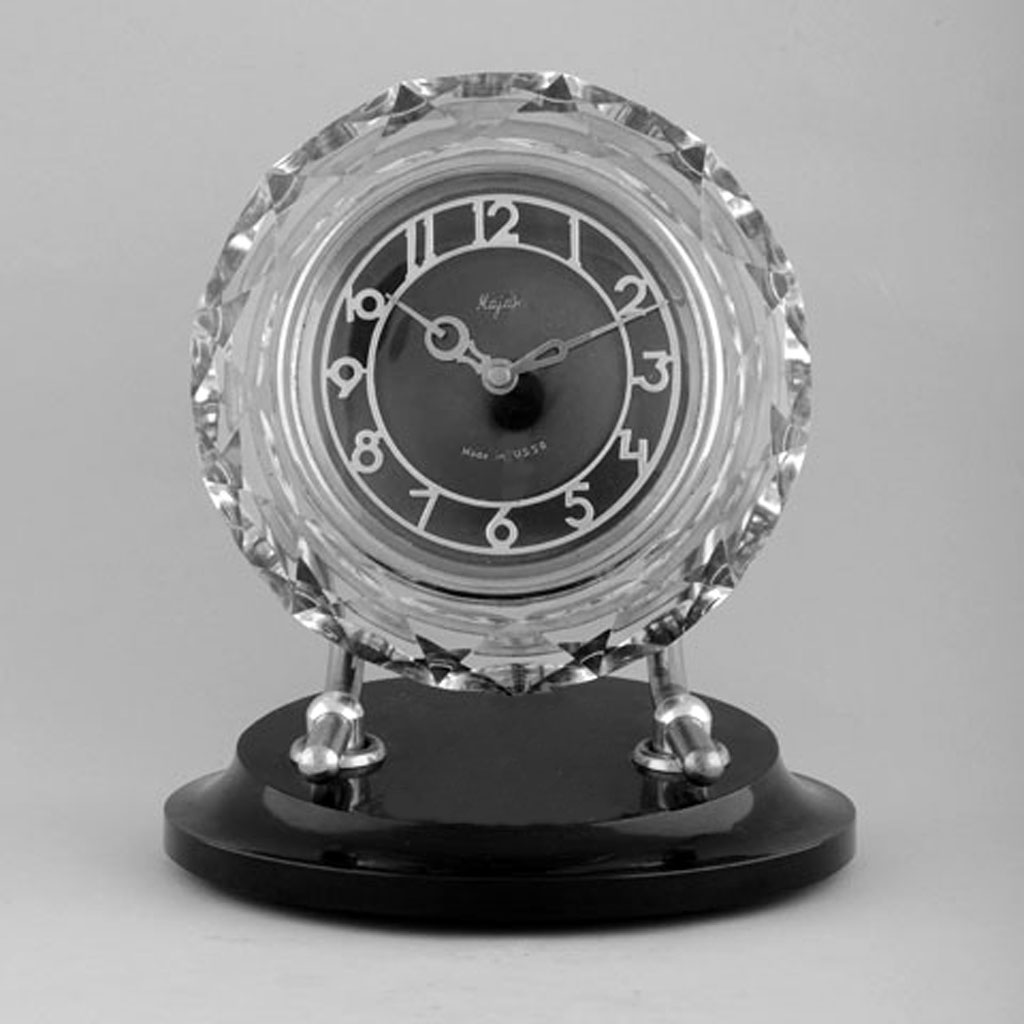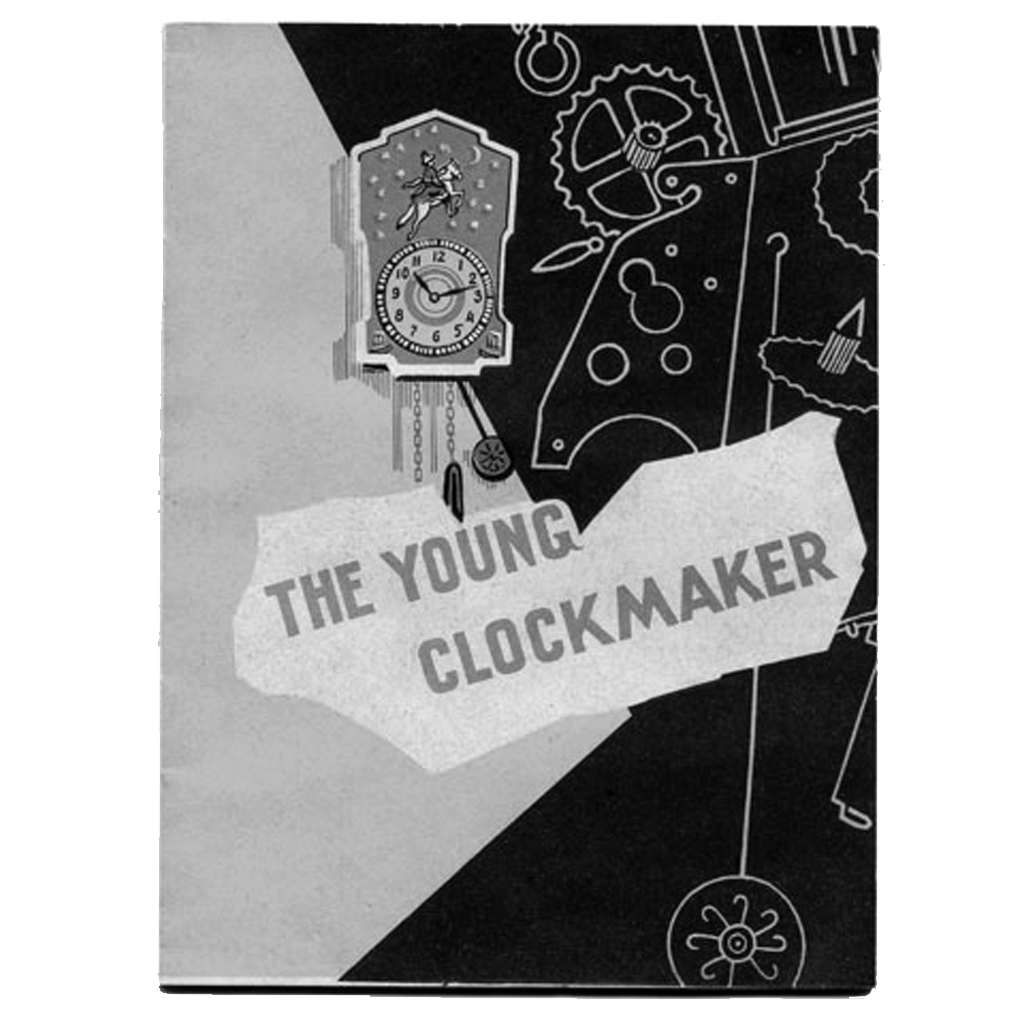|
|

«Труды Саратовской ученой архивной комиссии.
Сердобский научный кружок краеведения и уездный музей»
Serdobsk Clock Factory
During Second World War the horological industry was evacuated to the Urals, converted to defense production, but the manufacture of clocks and watches for everyday use was restored as early as 1944.
On November 17th 1943 an order № 404 was made by the NKMV — People’s Commissariat of Mortar Armament — to set up the manufacture of alarm clocks and bracket clocks in the city of Serdobsk, Penza region.
The factory was named the State Serdobsky watch factory № 5.
The basis of a factory many time were purchased at the end of 20-ies of XX century the Soviet government's a tooling bankrupt Ansonia Clock Company for the horological industry in the USSR: 32 machine, of them 22 chain knitting machines company «Gum Duerr» release 1901, a little younger pendulum press and bending machines.
Following the war the factory was ordered to produced women’s watches along with alarm clocks, table clocks on 4 ruby jewels with a 1-day winding spring, pendulum wall clocks and tin-face wall clocks.
Main dates in history
1943 the beginning of construction Serdobsk Clock Factory
1944 first production alarm clocks and he simplest types of wall clocks — tin-face wall clock, khodiki
1955 the factory produces a cuckoo clocks and childrens mechanical toys.
In addition to a huge domestic sales volume, in 1956 clocks were exported in large quantities to England, and many other countries
1957 the main production of the factory is wall and table technically complex balance clocks on 11 ruby jewels with a 7-day winding spring
1963 march 27th сonferred and registration of a trade mark «Majak»
1963 the company reports that were in all manufactured 50.000.000 clocks more than forty different model
1966 mastered the production of electromechanical clocks
1973 the company reports that were in all manufactured 77.500.000 clocks ninety seven different model
1976 mastered the production of electromechanical clocks with central second hand
1977 closed produced the childrens mechanical toys
1980 mastered the production of quartz clocks
1981 the collected 100 millionth — cuckoo clock
1992 production clocks greatly reduced
2004 closed Serdobsky Clock Factory

desk clock «Majak», Serdobsky Clock Factory, 1975
11 jewels, caliber 74122, balance module by Tschistopolsky Watch Factory, 7-day winding spring
model «270-ЧБН», art deco, bakelite, crystal
|
Khodiki — tin-face weight driven pendulum mechanical wall clock, is made of tin display and wooden or metal base on the back.
The clock comes with instruction and original cardboard box.
The Serdobsky Clock Factory produced the many model clocks with different graphic themes under the «Serdobsky Clock Factory» and «Majak» trademark.
The Young Clockmaker
«Do-It-Yourself» kit for building a tin-face khodiki pendulum clock with 18-page instruction book that appears to have been written and printed in USSR.
«British firm Cowan de Groot» imported and sold this kit under the trademark «Codeg».
Clock face features an image of «Ivan the Fool on the Humpbacked Horse» from the fairy tale «The Humpbacked Horse» by Russian poet Petr Yershov, 1815–1869.
Face measures 20 x 12 cm.

polytechnic toy «The Young Clockmaker»
Serdobsk Clock Factory, made in USSR, 1963
|
The practical construction set «The Young Clockmaker» is a toy intended for children of school age.
«The Young Clockmaker» acquaints them with the simplest type of clock-work and consists of a set component parts and permanently joined parts from which a working clock for children is made.
A weight provides the motive power.
The instructions acquaint the young clockmaker with the rules for assembling the children's clock.
Prior the assembling it is necessary to acquaint oneself with the names of the details and component units as well as with the pictures.
When assembling and dismantling: the clock avoid hitting any parts so as avoid bending or damaging them.
|
|